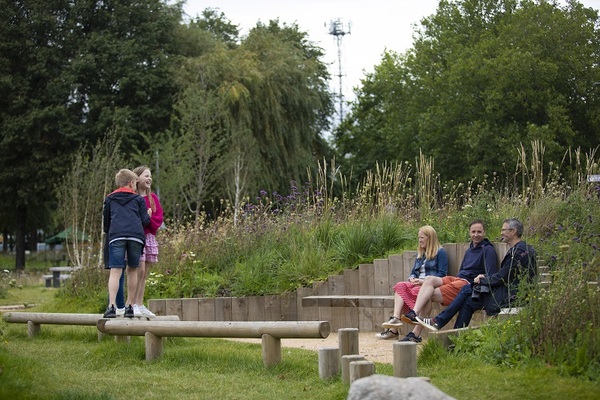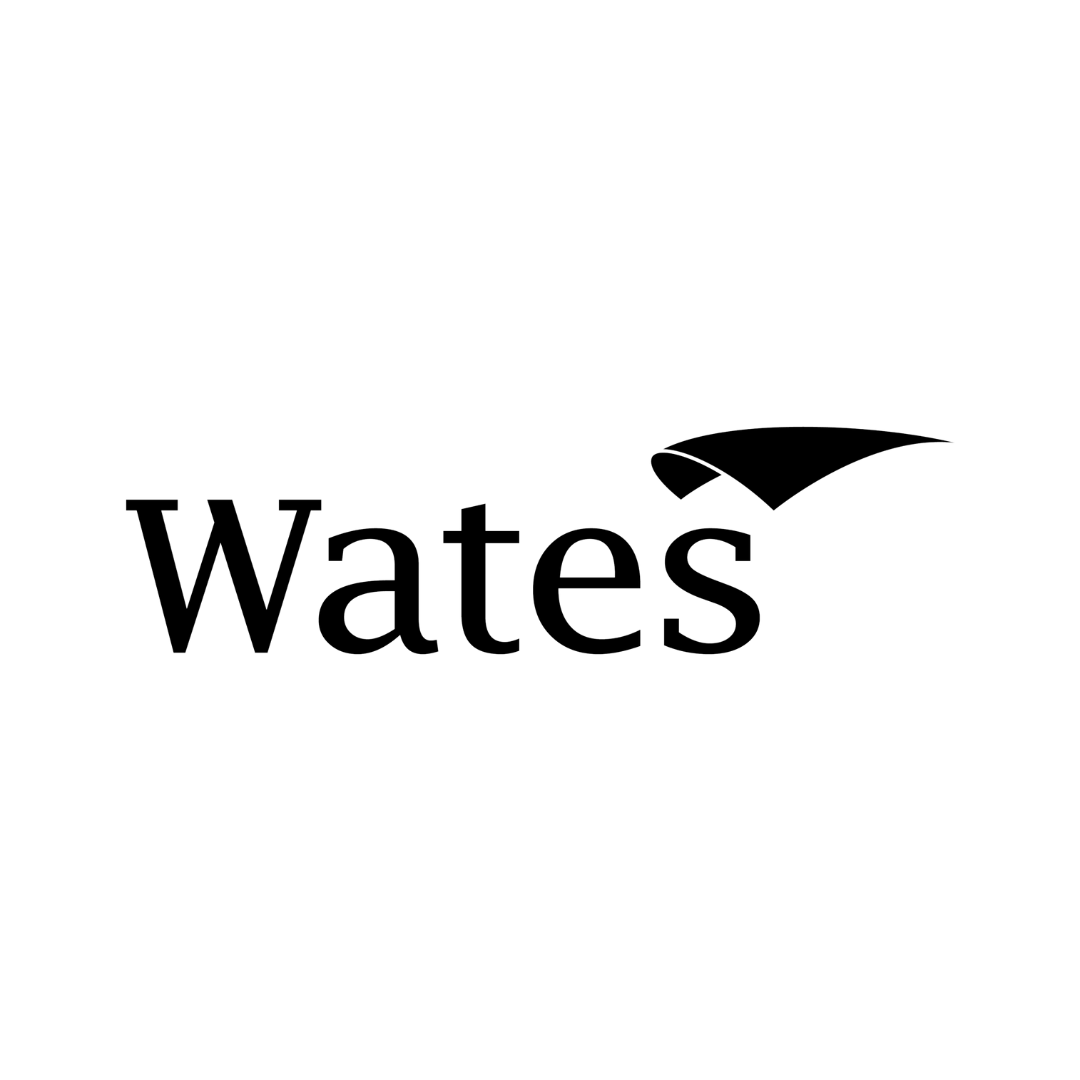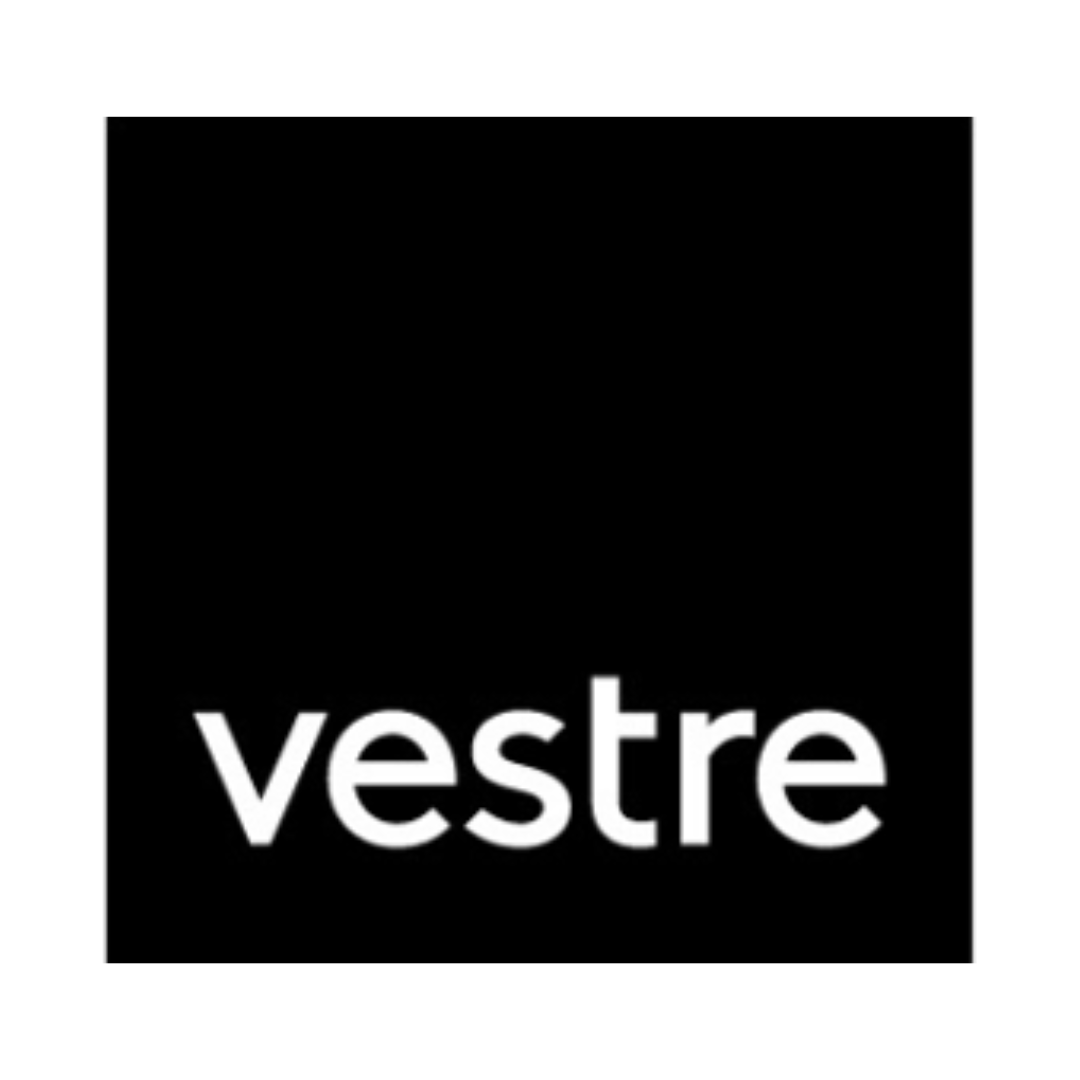Project showcase
West Gorton Community Park, Manchester - Manchester City Council with BDP
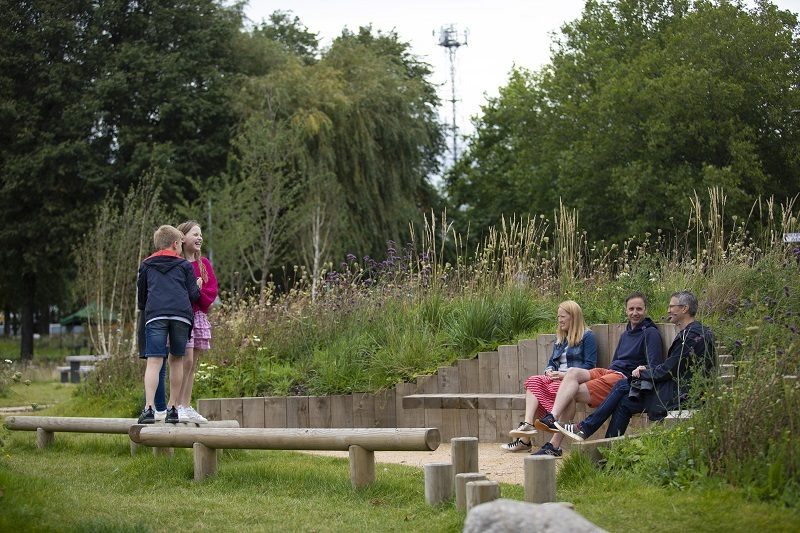
This new community park in Manchester, is the first UK demonstrator project for the GrowGreen initiative. Its data and management of the flow of rainwater into sustainable urban drainage systems, will be influential in the design of other green spaces in flood prone areas across Europe.
Where is the project located?
West Gorton Community Park,
Wenlock Way
Manchester, M12 5WH
Who is the developer/client of the project?
Manchester City Council
Describe the context of this project and how it has made a positive contribution to urban life or user experience of this place in 250 words max. and please upload an image of the project in its wider context or a drawing that best situates the project in its location.
West Gorton Community Park, Manchester, known locally as ‘Sponge Park’, is the first UK demonstrator project for the GrowGreen initiative, funded by the European Union’s 2020 Horizon programme. The initiative aims to show how nature based solutions (NBS) can combat against the effects of climate change by providing quantifiable evidence. The University of Manchester will monitor the park over the next five years to evaluate how well it manages stormwater flows, improves air quality, increases biodiversity and contributes to community value. The data they gather will then be used to inform the design of other green spaces in flood prone areas across the EU.
The new community park in West Gorton, commissioned by Manchester City Council, partnered with Guinness Partnership, is the final piece in a £100m regeneration scheme of 500 new homes, community facilities and school improvements. This new park provides a valuable greenspace for local residents. Unlike a typical park, the green space in West Gorton has been specifically designed using green infrastructure and natural engineering solutions to manage the flow of rainwater into sustainable urban drainage systems (SuDS) to help prevent flooding and overloading of the active drainage network.
Landscape architects BDP, alongside engineering and design consultancy Arup, have designed innovative systems for redirecting rainwater from roads and hard surfaces into an interconnected series of swales, rain gardens and other bio-attenuation features, creating a sustainable drainage park which the community in West Gorton can enjoy as an ecological amenity and use as an educational resource.
What do you see as the greatest success of this project? 250 words max. Please attach an image of the project that supports your statement.
The success of West Gorton is that it provides a more resilient, healthy and beautiful engaging park than your typical public park. Two main criteria contribute to this; Firstly, its innovation, by creating an intelligent landscape which works in harmony with natural systems, ecology and biodiversity to tackle climate change. Rainwater is captured using raised tables and channels, and redirected into SuDS features to irrigate soft landscape. Plants were selected for their adaption to climate change, encouraging wildlife into the previously derelict site. Hard surfaces have been replaced with permeable paving, greatly reducing water run-off and managing it through attenuation and infiltration. New green infrastructure such as wildflower meadows and tree planting have the added benefit of reducing air pollution and urban heat stress.
Secondly, its contribution to community wellness and healthy living. Extensive community engagement steered the design of the park at all stages from concept to completion. The community contributed to how their new park should look and function for the benefit of all. Key components include pedestrianizing roads and improving sightlines to increase safety and encourage active movement such as walking and cycling. A variety of spaces caters for all ages, abilities and cultures within this diverse neighbourhood, providing opportunities for residents to socialise and have an increased sense of community inclusion. The design incorporates peaceful community gardens, growing areas and open space for events. Alongside formal play areas, integrated play elements such as trim trails and grass mounding encourages ‘free play’ and interaction with nature.
How does this public space bring people together, encourage inclusivity, and make a positive environmental impact to the wider place? 250 words max. Please attach an image of the project that supports your statement.
The design for the park seeks to promote social cohesion and wellbeing, as well as environmental benefits to the city. The design incorporates three distinct areas; a woodland area filled with tree-lined paths and play features; a biodiverse meadow with picnic area and community garden for outdoor events. The aim is to encourage visitors to interact with nature and feel a strong sense of community.
The woodland area uses natural elements such as timber and rocks in a newly-designed playground space, providing accessible play equipment alongside objects for ‘free play’ to encourage physical movement and creative play. To the southern part of the woodland play area, a sunny glade has been created, allowing light to penetrate down to the paths, towards the timber seating spaces below. New paths and picnic furniture have been designed to be accessible to all.
In the meadow, running parallel with the primary pedestrian path, is a sinuous trail, with stepping stone logs and beams providing an alternative fitness route for children or adults. Seating niches set into meadow mounds help people feel immersed in nature, with flowers and wildlife at eye-level. The meadow provides a rich nectar source and habitat to strengthen existing wildlife corridors in the city.
The community area towards the south of the site includes lawns for events and pop-up markets, social seating areas and community planting beds to encourage residents to grow their own and share knowledge with others. Raised beds include wheelchair friendly accessible beds for those with impaired mobility.
Please share any data or figures that support your entry about how this public space or landscape intervention has made a positive social, economic or environmental impact, for example biodiversity, increased dwell time, flood or drainage mitigation, wellness or safety. You may also attach an additional image or document to support your entry.
The University of Manchester are monitoring the impact of the landscape interventions and community benefits, over the next 5 years. The focus being on the following:
• Reducing flood risk by better managing surface water run-off. The nature based green and blue infrastructure has been designed to attenuate over 200m3 of stormwater, which would otherwise have gone into the active drainage system.
• Improving physical and mental health and wellbeing of local people by encouraging active lifestyles through walking, taking exercise and being outdoors with others in a safer pedestrianized environment.
• Strengthening the cohesion and resilience of the community by building on existing groups and activities.
• Improving air quality, pollution and biodiversity - Over 65 new trees have been planted, 180 meters of hedgerow and 2000 bulbs.
The first data gathered will be made available in July 2021, after 12 months of the project completion.
The project was as much community led as it was academically. Amy Wright from Groundwork, who were subcontracted to help with community engagement explained that they held “Baseline consultations to find out what the current issues are and how their current park was being used.… They had a say throughout the design process. So, we conducted further consultations around different concept designs so they were able to feedback every step of the way”.
Local resident Heather Rangza said, “It’s brilliant. Because I was part of the group that helped design the park, it feels like it belongs to you. It’s worth every penny!”
Gallery
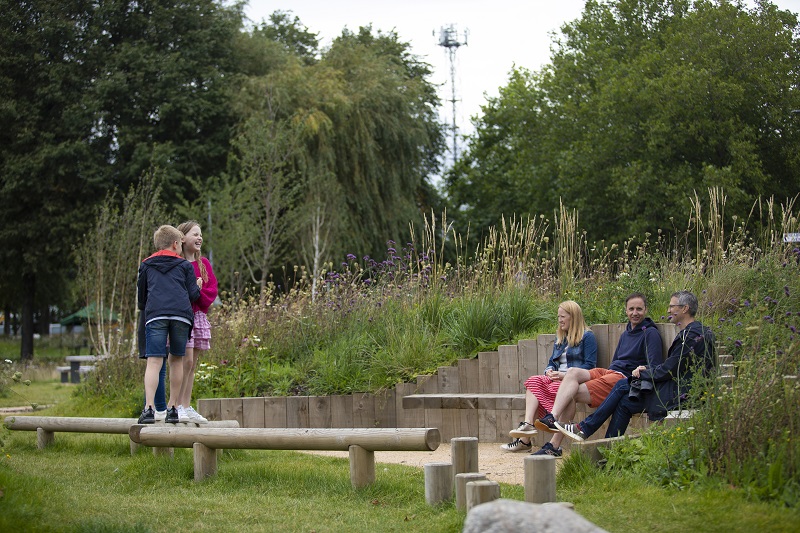

Festival of Pineapples
25-27 February
Pineapples prize giving night
March
Pineapples at Festival of Place
2 July
© The Pineapples - Tweak Ltd. 124 City Road, London, EC1V 2NX. Tel: 020 3326 7238
